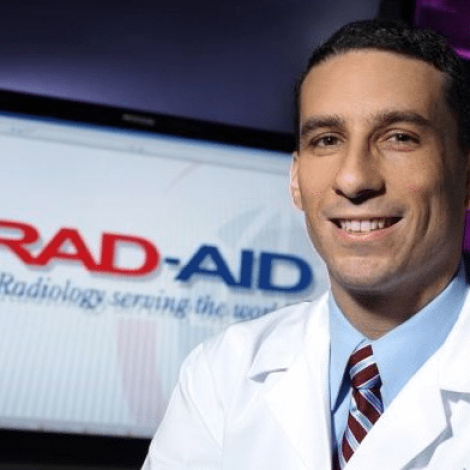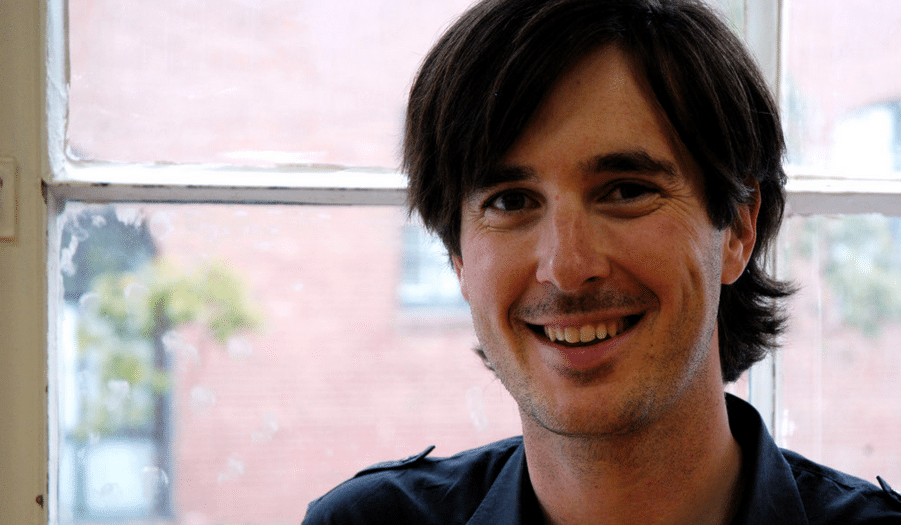E4C: What is the story behind your decision to found RAD AID?
DM: Many people here in the U.S. are familiar with radiology, such as getting an x-ray (radiograph) for a possible bone fracture, an ultrasound while pregnant, an MRI for an injured knee or shoulder, CT for chest or abdominal pain, or a mammogram for breast cancer screening. Imaging is vital for most healthcare decisions here in the U.S. and other developed countries. The World Health Organization has been reporting that one-half to two-thirds of the global population has little or no access to radiology, which severely limits healthcare in most parts of the world. It became clear to me that radiology could play a very significant role in building healthcare solutions for developing countries and poor regions.
Given the economic and technical complexity of implementing radiology, the challenge of addressing radiology shortages appealed to me because I had previously worked in business and finance. Before going into medicine, I had worked as a financial analyst for Goldman Sachs doing investment research and corporate planning with international economics, so I wanted to use that background for something positive in medicine. I decided to found RAD-AID with the mission of increasing and improving the use of radiology in underserved regions of the world. Because I had a diverse background in my own career of doing economic research work before going to medical school and residency, I wanted RAD-AID to entrench a multidisciplinary approach to international health by including economic development, clinical innovation, technology advancement, education and public health to form well- rounded strategies. Consequently, RAD-AID has become a wonderful vehicle and advocate for blending charitable efforts with strategic business entrepreneurship, creative technology innovation and clinical problem-solving.
[quote author=”Dr. Daniel Mollura”]Radiology has been one of the most inventive and creative specialties and it will be exciting to see what new hardware, software, techniques, and designs can arise from trying to bring more radiologic services to underserved areas.[/quote]
E4C: What is one thing that you have learned that has surprised you since you began this work?
DM: I have been amazed and inspired by the enthusiasm and passion of radiology and medical professionals in supporting RAD-AID’s mission and programs, including the radiologist MDs, radiologic technologists, nurses, physicists, engineers, IT specialists, business leaders, students, and other health personnel. We have found such wonderful visionary partners and volunteers that have truly empowered our programs to grow and create new ideas. RAD-AID could have remained a small organization based on a few people doing a handful of projects, but the devotion to helping poor communities was so great and so vast across our specialty that RAD-AID’s growth has been quite natural and energetic. RAD-AID provides basic structure and resources for volunteers to express their vision and desire to help others, and the projects have flourished.
E4C: Is there one thing that has kept you awake at night?
DM: A key issue in this work is sustainability; how to make solutions scale up to help more people for longer durations. Radiology technologies can have a wide spectrum of solutions ranging from low-cost ultrasound to very capital intensive equipment (such as CT and MRI), so strategies must be carefully planned out for the start-up phase as well as the long-term perspective of how that will be maintained.
For that reason, a cornerstone of RAD-AID’s development is Radiology- Readiness, which is a tool for assessing the need and potential uses of radiology in a community or a facility. In the past, radiology outreach efforts have often included donations of equipment that could not be maintained or supported by the recipient institution, leading to underutilization and even waste. So, RAD-AID tries to be data-intensive through its Radiology-Readiness program. It is meticulous in how a program is designed, so that radiologic solutions best meet the needs of the community and best fit within the infrastructure, culture, resources and epidemiological patterns of that region. The World Health Organization endorsed RAD-AID’s Radiology Readiness platform and RAD-AID partnered with the WHO to focus great attention on making solutions sustainable.
[quote author=”Dr. Daniel Mollura”]RAD-AID’s work is not just about helping other countries and the poor, but RAD-AID also aims to cultivate a new generation of health leaders who can think outside the box in charitable and innovative ways[/quote]
E4C: Ideally, what impact will your work have in five or 10 years from now?
DM: I hope that there are two major impacts. On one hand, I hope that RAD-AID can truly help shape the way poor regions and developing countries adopt medical imaging into their healthcare systems so that patients can receive the healthcare they need.
A second impact I hope for is to build the leadership capabilities of our students and residents here in the United States, to think globally about health and to include multidisciplinary thinking (such as economics, technology, international policy, public health) in their perspectives.
I have seen many students and residents come to RAD-AID with the simple desire of wanting to help patients in underserved regions, and I have directly seen these students and residents blossom into great leaders at RAD-AID by integrating economic development, technology innovation, public health research, data collection, and clinical strategy into effective solutions. So, RAD-AID’s work is not just about helping other countries and the poor, but RAD-AID also aims to cultivate a new generation of health leaders who can think outside the box in charitable and innovative ways.
E4C: And in that same time frame, what improvements would you like to see in the technology used in healthcare in developing countries?
DM: Healthcare technology in developing countries will be fast evolving over the next five to 10 years. Some of the improvements will be to find cost-efficient ways to use limited resources better so that impoverished areas can provide more healthcare with limited capital. This may lead to lower-cost technologies.
However, the fascinating aspect of the development of the technology is that new ideas can potentially change the way medicine is practiced. For example, if a new innovation enables imaging to be available at the primary care center or at the patient’s bedside, then new medical practice- patterns can take hold that change the way diagnosis and treatment occur.
It is hard to predict how that will take shape because each culture, community and country have very different needs and resources that may bring about such innovation, but radiology has been one of the most inventive and creative specialties and it will be exciting to see what new hardware, software, techniques, and designs can arise from trying to bring more radiologic services to underserved areas.

